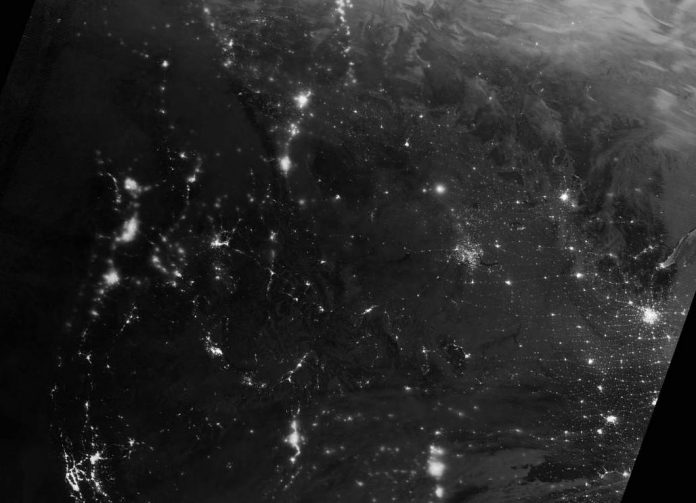Just hours after the winter solstice, a mass of energetic particles from the Sun smashed into the magnetic field around Earth. The strong solar wind stream stirred up a display of northern lights over northern Canada.
NASA’s Suomi NPP spacecraft recorded the northern lights, or aurora borealis, across British Columbia, Alberta, Saskatchewan, Manitoba, Nunavut, and Northwest Territories in Canada on the night of Dec. 22. From 512 miles (824 kilometers) above the Earth, the satellite’s Visible Infrared Imaging Radiometer Suite captured the northern lights display, which appeared as glowing swirls of clouds over northern Canada, NASA’s Earth Observatory said in a statement.
The northern lights occur when particles from the sun known as the solar wind interact with Earth’s magnetic field, according to NASA scientists. Because the particles are charged, they can cause electrical current changes in the field that then send energetic particles into the upper atmosphere’s gases. When the particles hit the gases, they charge them, and when the gases release this gained energy, the aurora glows are triggered.
Energetic particles from sun smashed into Earth's magnetic field Dec. 22, stirring up a display of northern lights: https://t.co/WntuGJ4fBz pic.twitter.com/R0LmTTA1of
— NASA (@NASA) December 27, 2016















